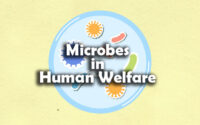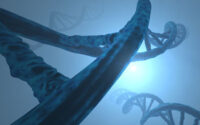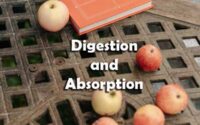Sexual Reproduction in Flowering Plants
1. Flowers which have single ovule in the ovary and are packed into inflorescence are usually pollinated by—
A. Water
B. Bee
C. Wind
D. bat
2. A dioecious flowering plant prevents both :
A. Autogamy and Xenogamy
B. Autogamy and Geitonogamy
C. Geitonogamy and Xenogamy
D. Cleistogamy and Xenogamy
3. Attractants and rewards are required for—
A. Anemophily
B. Entomophily
C. Hydrophily
D. cleistogamy
4. Functional megaspore in an angiosperm develops into—
A. Ovule
B. Endosperm
C. embryosac
D. embryo
5. The ovule of an angiosperm is technically equivalent to-
A. megasporangium
B. megasporophyll
C. megaspore mother cell
D. megaspore
6. In majority of angiosperms—
A. egg has a filiform apparatus
B. there are numerous antipodal cells
C. reduction division occurs in the megaspore mother cells
D. a small central cell is present in that embryo sac
7. Pollination in water hyacinth and water lily is brought about by the agency of—
A. water
B. insects or wind
C. birds
D. bats
8. Which one of the following statements is not true?
A. Pollen grains of many species cause severe allergies.
B. Stored pollen in liquid nitrogen can be used in the crop breeding programmes.
C. Tapetum helps in the dehiscence of another.
D. Exine of pollen grains is made up of sporopollenin.
9. Cotyledon of maize grain is called-
A. Coleoptile
B. Scutellum
C. Plumule
D. coleorhiza
10. The coconut water from tender coconut represents—
A. free nuclear proembryo
B. free nuclear endosperm
C. endocarp
D. fleshy mesocarp
11. Seed formation without fertilisation in flowering plants involves the process of-
A. somatic hybridisation
B. apomixis
C. sporulation
D. budding
12. Which of the following statements is not correct?
A. Pollen germination and pollen tube growth are regulated by chemical components of pollen interacting with those of the pistil.
B. Some reptiles have also been reported as pollinators in some plant species.
C. Pollen grains of many species can germinate on the stigma of a flower, but only one pollen tube of the same species grows into the style.
D. Insects that consume pollen or nectar without bringing about pollination are called pollen/nectar robbers.
13. Filiform apparatus is characteristic feature of—
A. aleurone cell
B. synergids
C. generative cell
D. nucellar embryo
14. Which one of the following fruits is parthenocarpic?
A. Jackfruit
B. Banana
C. Brinjal
D. Apple
15. Male gametophyte in angiosperms produces—
A. single sperm and two vegetative cells
B. three sperms
C. two sperms and a vegetative cell
D. single sperm and a vegetative cell
16. Malacophily is the pollination by-
A. Insects
B. Birds
C. Snails
D. mammals
17. Egg in female gametophyte is accompanied by-
A. antipodal cells
B. synergids
C. definitive nucleus
D. tube nucleus
18. Banana is an example of—
A. Parthenocarpy
B. Apomixis
C. parthenogenesis
D. polyembryony
19. Endosperm nucleus is—
A. N
B. 2n
C. 3n
D. 4n
20. Consider the following statements and choose the correct option.
A. The ovule is attached to the placenta by means of a stalk called filament.
B. B. The ovule fuses with the stalk in the region called hilum.
C. The two protective envelopes of ovule are called integuments.
D. The small opening in the tip of ovule is called germ pore.
Of the above statements.
A. A and D are correct
B. A and C are correct
C. B and D are correct
D. B and C are correct
21. The residual persistent nucellus in the seed of black pepper and beet is called—
A. perisperm
B. endosperm
C. pericarp
D. scutellum
22. Which of the following is false in angiosperms?
A. Egg cell — Haploid
B. Megaspore — Dipolid
C. Pollen grain — Haploid
D. Synergid — Haploid
23. Consider the following statements with respect to flowering plants—
A. The pollen grains represent the male gametes.
B. The functional megaspore develops into the embryo sac represent the female gamete.
C. Transfer of pollen grains from anther to the stigma of different plant is known as xenogamy.
D. Transfer of pollen grains from anther to the stigma of another flower of the same plant is known as geitonogamy.
Of the above statements
A. A and B are correct
B. A and C are correct
C. A and D are correct
D. C and D are correct
24. The 2000 year old seed excavated from King Herod’s palace at dead sea belong to—
A. Dendrocalamus strictus
B. Lupine articus
C. Phoenix dactylifera
D. Strobilanthus kunthiana
25. The fibrous bands develop from cells of the another wall layer known as—
A. Epidermis
B. Endothecium
C. middle layers
D. tapetum
26. Chalazogamy is shown by-
A. Petunia
B. Cucurbita
C. Pistacia
D. Casuarina
27. The ‘isobilateral type’ of microspores arrangement in tetrad is present in—
A. Solanum nigrum
B. Zea mays
C. Cassia fistula
D. Vigna radiata
28. Assertion : Endothecium layer of anther wall plays an important role in dehiscence of anther.
Reason : The presence of fibrous bands and differential expansion of inner and outer tangential walls of endothecial cells cause dehiscence of anther.
A. If both assertion and reason are true and reason is the correct explanation of assertion.
B. If both assertion and reason are true but reason is not the correct explanation of assertion.
C. If assertion is true but reason is false.
D. If both assertion and reason are false.
29. Consider the following statements with respect to pollen grains.
A. The exine is a thin and continuous layer made up of cellulose and pectin.
B. The hard outer layer called the exine is made up of sporopollenin.
C. Sporopollenin is present in germ pores.
D. The exine exhibits a fascinating array of patterns and designs.
Of the above statements
A. A and B alone are correct
B. A and C alone are correct
C. B and D alone are correct
D. B and C alone are correct
30. Which of these is not a part of the anther wall?
A. Epidermis
B. Middle layers
C. Endothecium
D. Nucellus
31. Water pollinated plants have-
A. bright colour
B. fragrance
C. mucilage covering over pollen grains.
D. tassels
32. Which among these is not a post-fertilisation event?
A. Fruit formation
B. Gametogenesis
C. Seed formation
D. Embryogenesis
33. Which one of the following statements is correct?
A. Chasmogamous flowers never exhibits autogamy.
B. Chasmogamous flowers always exhibits geitonogamy.
C. Cleistogamous flowers exhibits both autogamy and geitonogamy.
D. Cleistogamous flowers always exhibits autogamy
34. In a dithecous anther, each pollen sac contain 1000 MMC. What is the total number of pollen grains produced by the anther?
A. 16,000
B. 4,000
C. 32,000
D. 8000
35. Apomixis is—
A. formati0n of seeds by fusion of gametes
B. formation of seeds without syngamy and meiosis
C. formation of seeds with syngamy but no meiosis
D. none of the above.
36. Primary endosperm nucleus (PEN) is formed by the fusion of-
A. 2 polar nuclei + 1 synergid cell nucleus
B. 1 polar nucleus + 1 antipodal cell nucleus + 1 synergid cell nucleus
C. 2 polar nuclei + 1 male gamete nucleus
D. 2 antipodal cell nuclei + 1 male gamete nucleus.
37. What is the correct sequence of the formation of female gametophyte in angiosperms?
A. Nucellus, megaspore tetrad, megaspore mother cell, megaspore, female gametophyte
B. Megaspore tetrad, nucellus, megaspore mother cell, megaspore, female gametophyte
C. Nucellus, megaspore mother cell, megaspore tetrad, megaspore, female gametophyte.
D. Megaspore mother cell, megaspore tetrad, megaspore, nucellus, female gametophyte.
38. In angiosperms, microsporogenesis and mega-sporogenesis—
A. involve meiosis
B. occur in ovule
C. occur in anther
D. form gametes without further divisions.
39. Primary archesporial cell develops from the cells of-
A. nucellus towards micropylar end
B. inner integument towards micropylar end
C. nucellus towards chalazal end
D. outer integument towards chalazal end.
40. An ovule, where chalaza, micropyle and embryo sac lie along vertical line is called-
A. campylotropous ovule
B. hemianatropous ovule
C. orthotropous ovule
D. circinotropous ovule
41. Which part of the pollen causes pollen allergy?
A. Exine
B. Intine
C. Pollen cytoplasm
D. Both (a) and (b)
42. The main advantage of cleistogamy is that it ensures—
A. cross pollination
B. seed setting even in absence of pollinators
C. protandry in flowers
D. geitonogamy instead of autogamy.
43. Which of the following pairs in angiosperms are diploid and triploid, respectively?
A. polar nucleus and secondary nucleus
B. microspore mother cell and egg cell
C. secondary nucleus and endosperm
D. endosperm and antiopodal cells
44. What is the function of germ pore?
A. initiation of pollen tube
B. absorption of water for seed germination
C. emergence of radicle
D. release of male gametes
45. The monocotyledonous seed consists of one large and shield shaped cotyledon known as a/an—
A. Coleoptile
B. Scutellum
C. aleurone layer
D. coleorhiza
46. Which one of the following is not a correct explanation of cross pollination?
A. The pollen grains of male flowers are transferred to the stigma of the female flowers.
B. The pollen grains are transferred from one flower to another flower, of another plant of the same species.
C. The pollen grains are transferred from one flower to another flower situated on the same plant.
D. The pollen grains of one flower are transferred to the stigma of the same flower.
47. Large stout, nocturnal flowers producing copious nectar and emitting fermenting fruity odour are the adaptations for—
A. Entomophily
B. Ornithophily
C. Chiropterophily
D. Anemophily
48. If there are 1280 microspores in a tetralocular anther, how many microspore mother cells will be there in its each pollen.
A. 80
B. 160
C. 240
D. 1280
49. In angiosperm during development of embryo, the suspensor cell develops from—
A. oospore
B. integument
C. endosperm
D. cotyledon
50. How many haploid nuclei are present in a mature pollen grain?
A. One
B. Two
C. Three
D. four
51. Function of filiform apparatus is to—
A. recognise the suitable pollen at stigma
B. stimulate division of generative cell
C. produce nectar
D. guide the entry of pollen tube
52. Pollen tablets are available in the market for—
A. in vitro fertilisation
B. breeding programmes
C. supplementing food
D. ex situ conservation
53. Entomophilous flowers are-
A. brightly coloured and produce nectar
B. colourless
C. inconspicuous
D. odourless



